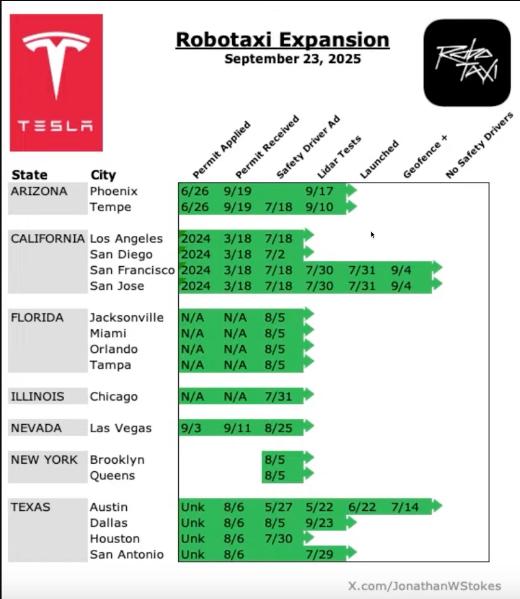Elon said that Tesla FSD Version 14.0 goes into early wide release next week, then 14.1 about 2 weeks later and finally 14.2.
The car will feel almost like it is sentient being by 14.2.
This will have ten times the parameters of FSD 13.
It is supposed to be 2-3 times safer than human driving.
If the 2-3 times safer than human driving materializes, then the safety monitor and safety drivers are removed and there is wide release with a lot of cars in many cities.

FSD 14
1. A model ~10x larger than v13
2. Major shift to RL over imitation learning (IL).
This will enable nuance, safety, and fluidity beyond human data limits.
A neural net is an architecture of “neurons” connected by weights (connections) and biases (filters), totaling parameters (mostly weights). v14 has 10x parameters vs. v13.
the benefit of more parameters is more decision points for more nuanced outputs.
Input (camera photons) → Rich function → Output (steering, acceleration, braking).
It absorbs more training data without overfitting, capturing edge cases.
Trade-Offs are more training is needed. ~10x more compute/time (linear scaling assumed) and more data must be fed in.
Inference (on-car): HW constraints limit size—v13 ran at ~30 cycles/sec. 10x model drops to ~5/sec initially and this requires tuning to hit minimum response times. No need for 60/sec, but balance speed/quality.
Why not bigger (100x)? Inference bottlenecks and Tesla optimizes for real-time (like 30 FPS video processing).
Imitation Learning (IL) Explained- Copying Good Drivers in Detail
Supervised learning using labeled real-world/simulated data from good drivers.
Select fluid, safe human drivers. Avoid bad drivers. focus on best outcomes. Tesla uses the scoring of drivers.
Models learns to imitate the right human in scenarios.
The limit is the best human data. Getting better needs new techniques.
Reinforcement Learning (RL): The Game-Changer
IL maxes at best humans. RL “jumps over” by simulating unseen scenarios at scale, tuning beyond human limits.
Agent Setup: Release FSD as an “agent” in simulated scenarios. run thousands of “trajectories” (paths/decisions).
Rewards/Penalties: Score outcomes
(-50 for hitting pedestrian; -25 for rear-end from hard brake; -5 for aggressive lane change). Prioritize (e.g., minor side-swipe pedestrian death).
Loss Function: Backpropagate scores to tweak weights/biases. Get emergent behaviors.

Brian Wang is a Futurist Thought Leader and a popular Science blogger with 1 million readers per month. His blog Nextbigfuture.com is ranked #1 Science News Blog. It covers many disruptive technology and trends including Space, Robotics, Artificial Intelligence, Medicine, Anti-aging Biotechnology, and Nanotechnology.
Known for identifying cutting edge technologies, he is currently a Co-Founder of a startup and fundraiser for high potential early-stage companies. He is the Head of Research for Allocations for deep technology investments and an Angel Investor at Space Angels.
A frequent speaker at corporations, he has been a TEDx speaker, a Singularity University speaker and guest at numerous interviews for radio and podcasts. He is open to public speaking and advising engagements.